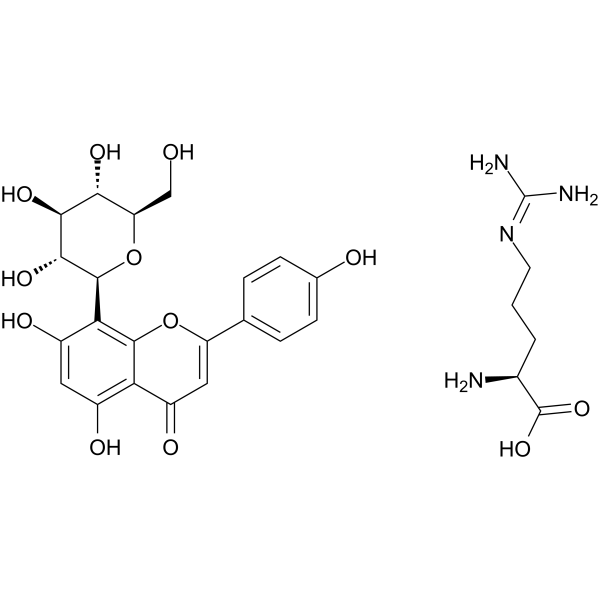Hexa-D-arginine TFA;(Synonyms: Furin Inhibitor II TFA)
Hexa-D-arginine TFA (Furin Inhibitor II TFA) 是一种稳定的 furin 抑制剂,对 furin,PACE4 和 PC1 的 Ki 值分别为 106 nM,580 nM 和 13.2 μM。Hexa-D-arginine TFA 在体外和体内均可阻断假单胞菌外毒素 A 和炭疽毒素的毒性。
Hexa-D-arginine TFA Chemical Structure
CAS No. : 958204-56-3
| 规格 |
|
是否有货 |
|
| 100 mg |
; |
询价 |
; |
| 250 mg |
; |
询价 |
; |
| 500 mg |
; |
询价 |
; |
* Please select Quantity before adding items.
Hexa-D-arginine TFA 的其他形式现货产品:
Hexa-D-arginine
| 生物活性 |
Hexa-D-arginine TFA (Furin Inhibitor II TFA) is a stable furin inhibitor with Ki values 106 nM, 580 nM and 13.2 μM for furin, PACE4 and prohormone convertase-1 (PC1), respectively. Hexa-D-arginine TFA blocks Pseudomonas exotoxin A and anthrax toxins toxicity in vitro and in vivo[1][2][3].
|
IC50 Target |
Ki: 106 nM (Furin), 580 nM (PACE4) and 13.2 μM (PC1)[3]
|
体外研究
(In Vitro) |
Hexa-D-arginine effectively blocks Pseudomonas aeruginosa exotoxin A (PEA)-induced cell lysis and is itself noncytotoxic[1].
MCE has not independently confirmed the accuracy of these methods. They are for reference only.
|
体内研究
(In Vivo) |
Administration of Hexa-D-arginine (0.1, 1, or 10 nM) to Pseudomonas aeruginosa exotoxin A (PEA)-treated mice (6-week-old FVB and 129/Sv mice) significantly improves their survival rate and also decreases circulating levels of TNF-α[1].
MCE has not independently confirmed the accuracy of these methods. They are for reference only.
|
| 分子量 |
|
| Formula |
|
| CAS 号 |
|
| Sequence |
Arg-Arg-Arg-Arg-Arg-Arg-NH2
|
| Sequence Shortening |
|
| 运输条件 |
Room temperature in continental US; may vary elsewhere.
|
| 储存方式 |
Please store the product under the recommended conditions in the Certificate of Analysis.
|
| 参考文献 |
-
[1]. Sarac MS, et al. The furin inhibitor hexa-D-arginine blocks the activation of Pseudomonas aeruginosa exotoxin A in vivo. Infect Immun. 2002 Dec;70(12):7136-9.
[2]. Sarac MS, et al. Protection against anthrax toxemia by hexa-D-arginine in vitro and in vivo. Infect Immun. 2004 Jan;72(1):602-5.
[3]. Cameron A, et al. Polyarginines are potent furin inhibitors. J Biol Chem. 2000 Nov 24;275(47):36741-9.
|







